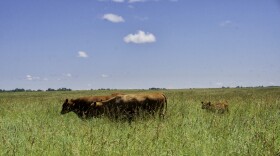-
The Great Lakes Water Quality Agreement needs to be updated to address the urgent issue of microplastic pollution. Scientists suspect high levels of microplastics in the Great Lakes because they are landlocked, and closer to people, which are the main source of plastic pollution.
-
An update on the toxic chemical Gelman plume nearing Ann Arbor's drinking water source, Detroit and other Michigan regions are sinking, a local play examines the relationship between technology consumers, and technology creators and preview of the 2025 Mackinac Policy Conference.
-
Michigan’s Department of Environment, Great Lakes, and Energy wants to create a septic system database. Michigan is the only state without a statewide septic system code.
-
Drainage systems carry away excess water, but they also take fertilizers that can fuel harmful algal blooms. Researchers, companies, and farmers are deploying systems that can control that flow.
-
Surface and groundwater protection is covered under Part 31 of the Natural Resources and Environmental Protection Act. The Legislature prohibited the then-Department of Environmental Quality from making new rules under Part 31 after December 31, 2006.That is still the case.During the current lame duck session, the Legislature is considering bills would lift that ban on making rules for — what is today — the Department of Environment, Great Lakes, and Energy (EGLE).
-
Michigan and Ohio are both struggling to reduce the fertilizer runoff getting into Lake Erie which feeds cyanobacterial blooms, also called harmful algal blooms. Those toxic blooms can be hazardous to people and animals.
-
Prompted by persistent complaints of odor and contamination, regulators from the Ohio Agriculture Department and the state Environmental Protection Agency investigated earlier this year and cited nine farms for manure mismanagement, and issued fines to three farms for failing to secure proper operating permits.
-
The need for such research is urgent. Bacteria draining into recreational waters from overflowing wastewater treatment plants, livestock and poultry farms, and city streets and parking lots results in hundreds of beach closings annually across the five Great Lakes. Phosphorus running off farm fields and from big dairy, hog, and poultry operations causes harmful algal blooms in Lake Erie and other lakes across the region.
-
Michigan State’s Jason Rowntree is out to prove that ranching is an ecological asset.
-
Three southeast Michigan watershed councils combine resources to make it easier for residents and municipalities to reduce rainwater runoff.
Michigan Public
TED Radio Hour
Michigan Public
TED Radio Hour
Next Up:
7:00 AM
On the Media
0:00
0:00
Available On Air Stations










